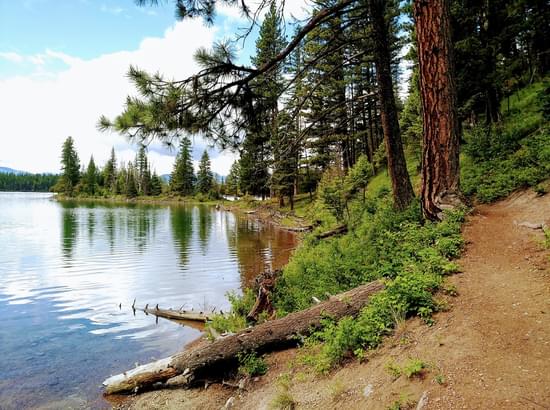




Before you go on any outdoor adventures you need to ask yourself these questions to confirm if your plans are safe and appropriate.
by Mike Passo, Executive Director, American Trails

Whether hiking, bicycling, riding on horseback or participating in motorized recreation nearly everyone uses trails for a similar goal – to spend time outdoors. This time outside, whether a short walk down a paved trail to work in an urban setting, or a hike to a point reachable to only a few Americans makes trail users happier people. We all know that spending time outdoors can improve our personal health in many ways like lessening anxiety, decreasing depression, boosting creativity, and increasing optimism.
But during this time of crisis, not all recreation is responsible.
1. Do I have the potential to come within six feet of people who are not a part of my household?
Is the trail wide enough, or does it offer the opportunity to get me and my equipment at least 6 feet (many experts are now saying 12 feet) away from another person passing on a trail. Single direction (one-way) trails are the best option for allowing limited exposure to other people.
2. Does this activity put me at risk for potential rescue, straining local resources?
Now is not the time to be attempting highly challenging or dangerous activities or highly technical trails that have a higher likelihood of you hurting yourself. Our hospitals have enough to worry about now, without you filling up their waiting rooms with broken arms or twisted ankles.
3. Am I coming into contact with surfaces that can hold and transfer the virus?
Avoid being out long enough that you would need to use the trailhead facilities (toilets), or need to tie up your horse at a crowded hitching post.
4. Will this put me in closer contact with vulnerable populations, such as those with compromised immune systems, persons over the age of 65, or those who are pregnant?
Your actions do not only affect you, but have a great effect on the people around you. Any time you move during this pandemic, you have the potential of carrying the virus with you as an asymptomatic carrier, or even on your clothing. No matter what, avoid even remote contact with vulnerable populations.
5. Do I need to travel outside of my local community to do this?
If you travel far to get to your trail or outdoor recreation experience, you may need to stop for gas, pick up food at a restaurant. Stay close to home to limit these exposures.
If you can answer YES to ANY of these questions, please alter your plans to keep your community safe by finding another form of recreation, a different location, or staying home.
National Recreation and Park Association
National Off-Highway Vehicle Conservation Council
American Hiking Society National Trails Day® Event Host Guide (2023)
posted Apr 16, 2024
This guide will provide you with the following resources and knowledge you need to plan and promote a successful event for National Trails Day®.
League of American Bicyclists National Bike Month Guide (2023)
posted Apr 16, 2024
May is National Bike Month, sponsored by the League of American Bicyclists, and celebrated in communities from coast to coast. This step-by-step guide will help you in creating a successful Bike Month event in your community, workplace, city or state.
Making Transportation Planning Applicable in Tribal Communities Research Study: Final Report
posted Dec 20, 2023
The Federal Highway Administration’s (FHWA) Office of Tribal Transportation (OTT) planning staff have observed two challenges in Tribal transportation planning: (1) that existing planning analysis tools do not always align with Tribal community context and needs and (2) it is not always clear what benefits planning provides to transportation project selection and delivery in Tribal communities.
posted Dec 20, 2023
This report and its appendices constitute a review of law, policy, and procedures, with recommendations for changes based on Tribal consultation and public comments.
4,645 views • posted 07/08/2020